
50cc Roadracing 1971
Van Veen KreidlerAs I said, the Van Veen Kreidlers had nothing to do with Kreidler. The only original Kreidler parts were the two engine halves, and they were extensively changed - the left hand side to take the rotating inlet, and the right hand side to accommodate the dry clutch. What's more, Van Veen didn't get the slightest support from the Kreidler works, and many Dutchmen complained that nevertheless the name Kreidler was so prominently displayed on the fairing. But Van Veen was a smart businessman, and he knew that the racing successes would stimulate the sales of Kreidler mopeds in Holland. |
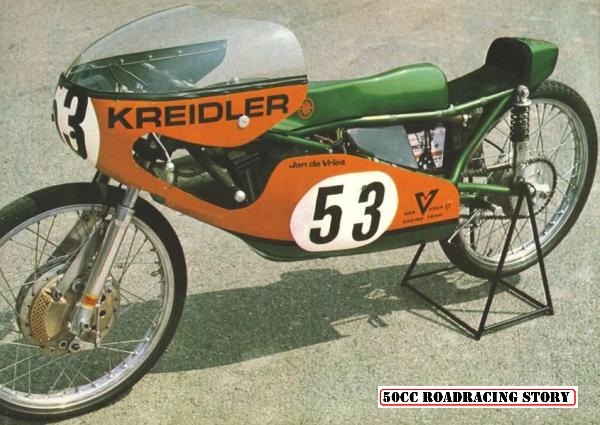 |
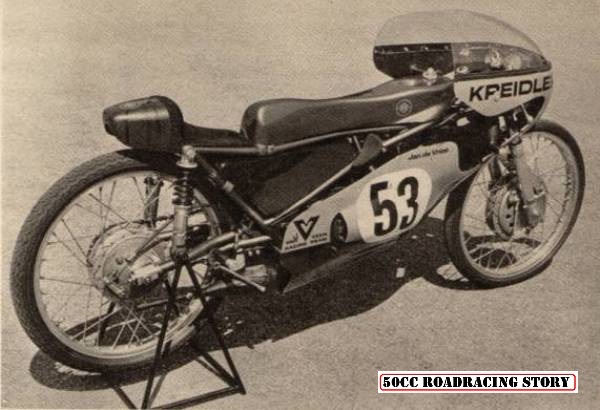 |
As can be seen from pictures, the bikes were extremely narrow, and were made to measure for Jan de Vries and Jos Schurgers. Tests in the wind tunnel showed a reduction of air drag of 20% compared to the year before. The frame was built of Reynolds 531 pipe. Under the very small and narrow polyester petrol tank, a second tank was placed in the frame triangle. Front forks Marzocchi, front brake Fontana, 180 mm double sided 2ls. |
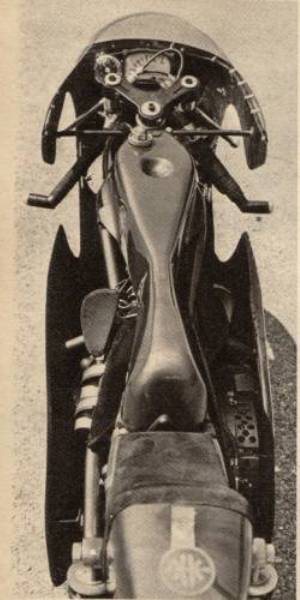 |
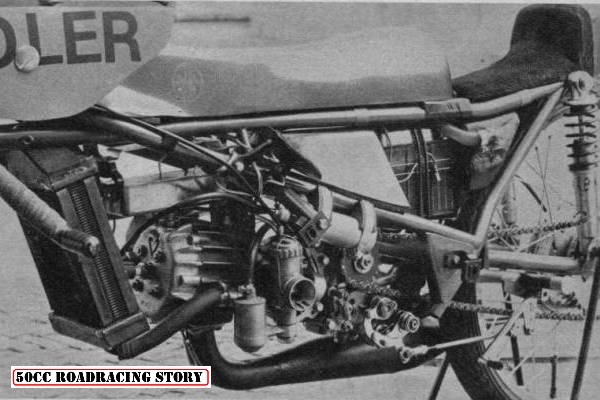 |
| The engine was a further development of the 1970 engine, with a new water-cooled cylinder and head, made by Van Veen. Working temperature of the engine was 85 degrees C. The now again used Bosch electronic ignition was energized by a 12 V battery. The water pump and oil pump were mechanically driven on the right hand side of the engine, in front of the clutch. The six-speed gearbox was available with three different ratios: low, middle and high, depending on the nature of the circuit. Measured top speed on Francorchamps was 182 km/h. | 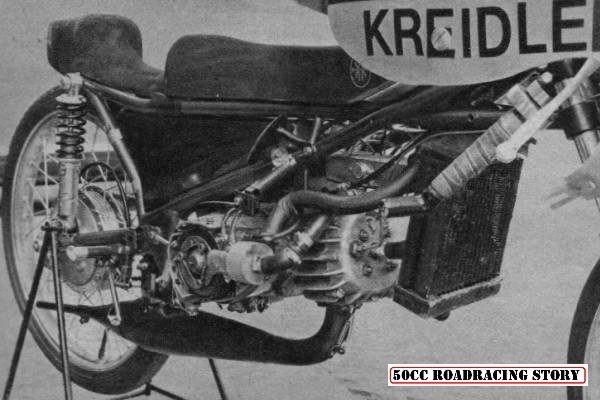 |
DerbiThe Derbis for the 1971 season were also changed compared to the year before. During the first race of the season, the 1970 models were still used, but during practice the new bikes were tested, and then used for the rest of the season (see pics Derbi71-1 and 71-3). The water cooled cylinder was positioned more upright. The crankcase was still also water cooled. Ignition with electronic Motoplat system. Some details of these very fast bikes look definitely somewhat primitive, e.g. the use of screw nipples for clutch and rear brake cables, and the operation of the start choke. The Derbis used Ceriani front forks with the 180 mm Fontana brake. |
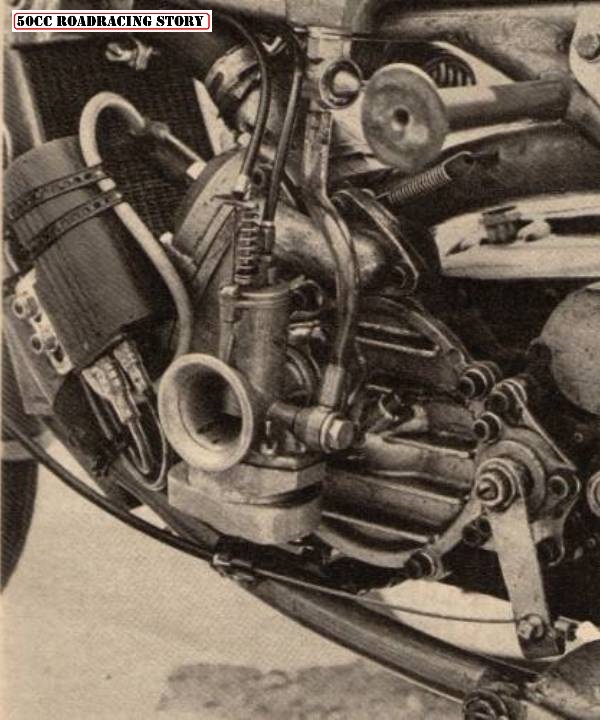 |
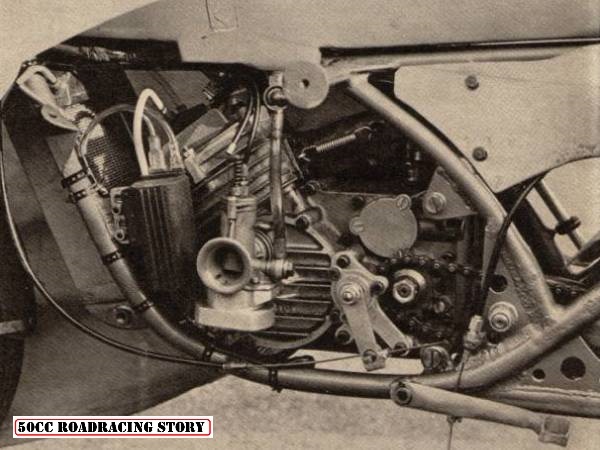 |
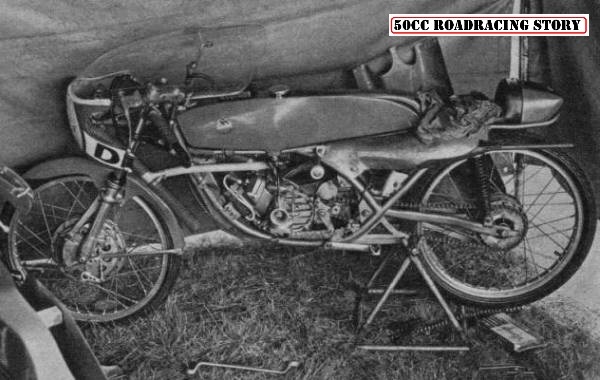 |
JamathiAlthough a third place in the world championship by privateers behind two work's teams is certainly very good, many people felt that the Jamathi results during 1971 were not as good as those of previous years. It has to be mentioned, however, that the 1971 Jamathis only appeared for the first time in Francorchamps - financial problems had prevented their earlier use. Seen in that light the result was outstanding. The engine was in principle the same one as used in 1970, although for some mysterious reason the power output was slightly down on the 1970 version. The new electronic ignition was developed by electronics giant Philips. Carburettor was Bing, with a Dell'Orto float chamber. Here, as the Van Veen Kreidlers, various gear ratios were available to adjust the bikes to the circuit. |
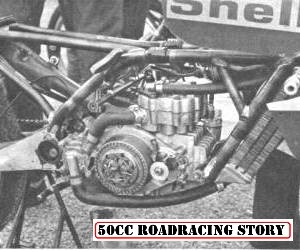 |
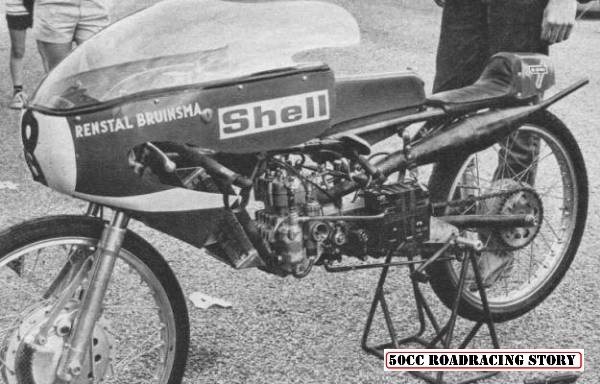 |
The new Jamathi frame was open on the underside, like the Van Veen Kreidler, and to keep the bike as narrow as possible, the rear suspension worked with only one shock absorber, which was specially developed for this purpose by Koni. Front forks Marzocchi with Fontana 180 mm double sided 2ls brake. Weight of the Jamathi was exactly 55 kg. |
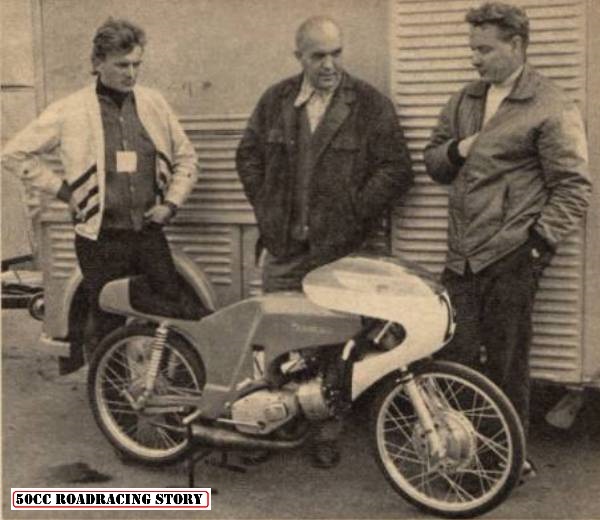 |
TomosTomos caused a minor sensation on 1971 by introducing a bike with a polyester monocoque frame! The frame consisted of two halves that were "glued" together, incorporating the 9 litre petrol tank, the level of which could be checked by leaving a narrow strip unpainted. Weight of the frame 7 kg, of the whole bike 55 kg. The swing arm was fabricated of steel profiles. To make the bike as low as possible, the top yoke of the Marzocchi forks was left off. front brake the by now well known Fontana. Pic shows Ing. Imperl Janez, the designer of the bike, between test rider Bernetic (left) and technician Koccvar. |
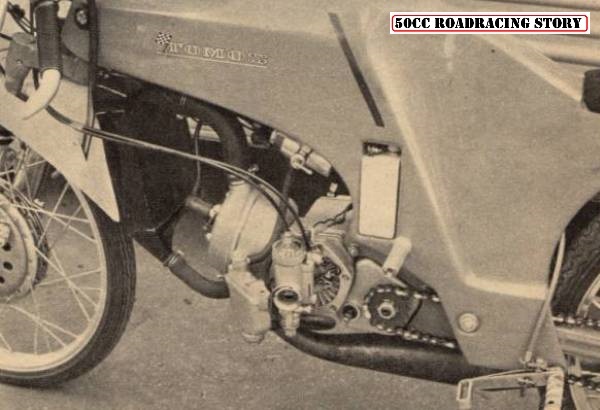 |
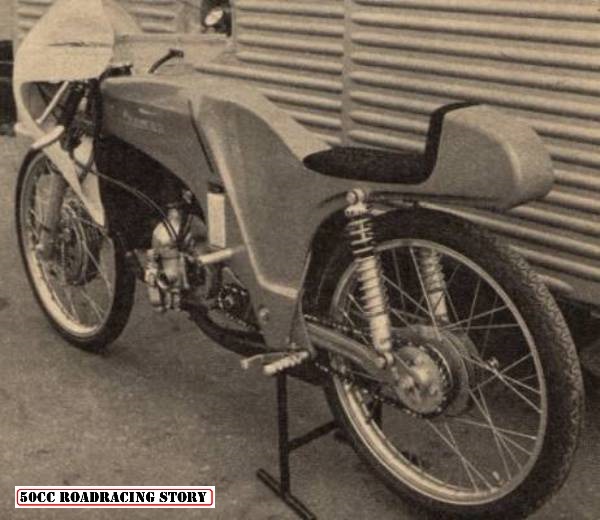 |
| The engine was also completely new and no longer based on the Puch engine. Cylinder and head water cooled, bore and stroke 40 x 39.6 mm, compression ratio 13 : 1, rotating inlet, carburation by 27 mm Dell'Orto SS carburettor. Ignition still with contact breakers! The goal was 15.5 bhp at 15,500 rpm | |
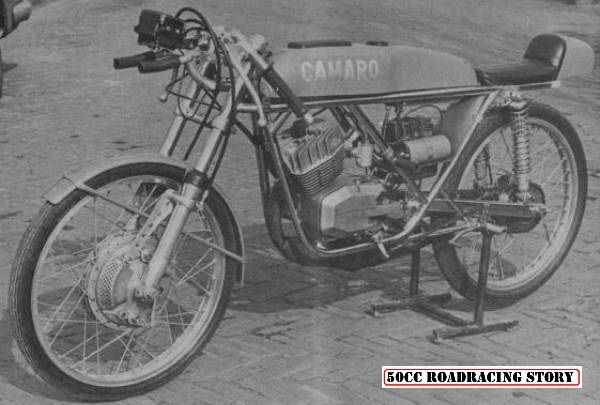 |
CamaroDuring 1971, Dutchman Theo Meurs developed a production racer called Camaro using his own frames, and an FBM (F. B. Minarelli) engine with his own cylinders and heads. The frame was chromium plated, and had Ceriani front forks and a Fontana front brake. Three different types of cylinders were available. Six speed gearbox. With such a bike the 1971 British 50 cc championship was won. |
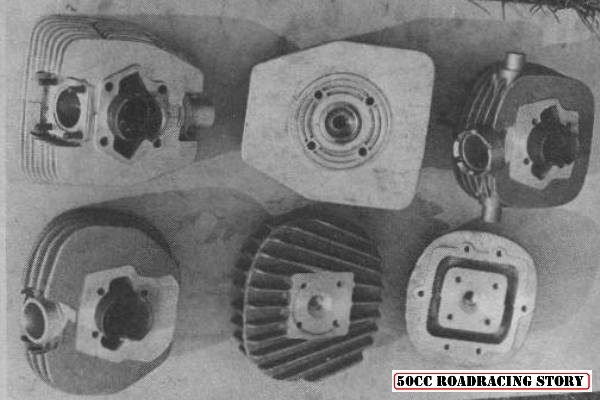 |
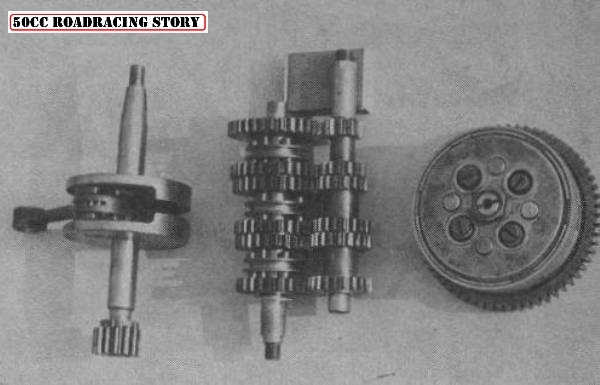 |
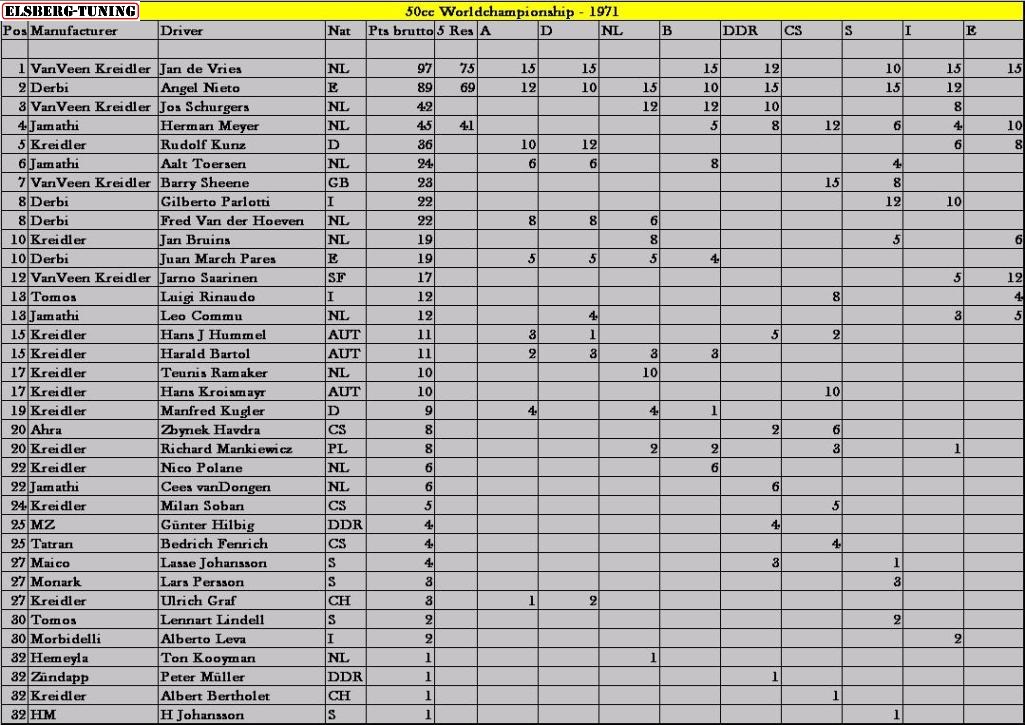 |
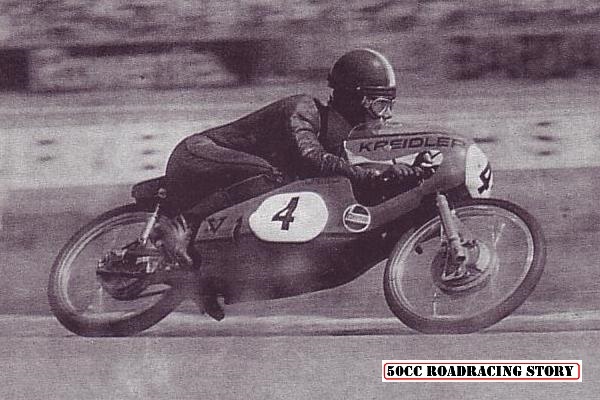 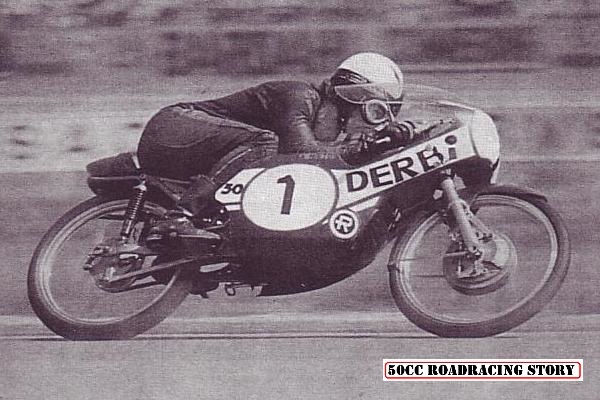 |
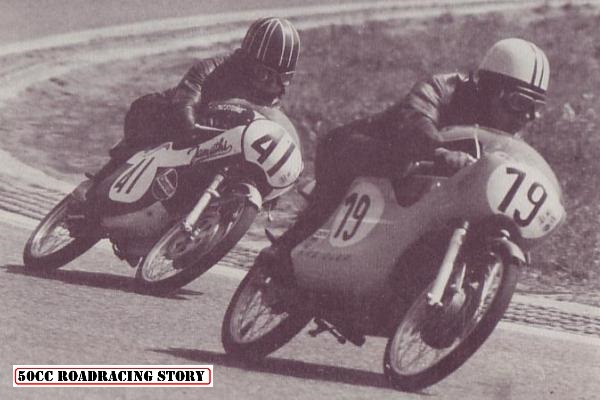 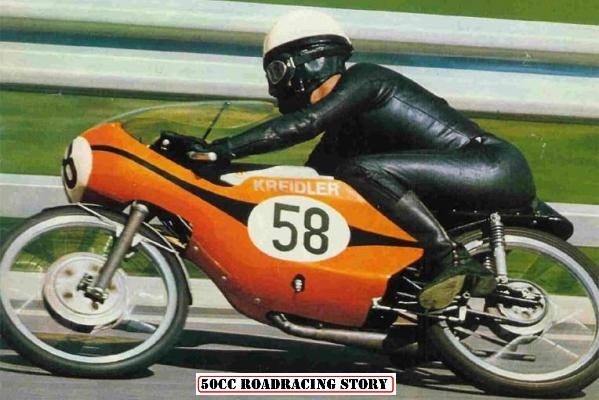 |
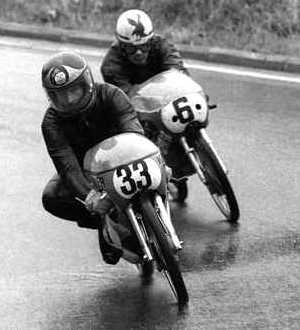 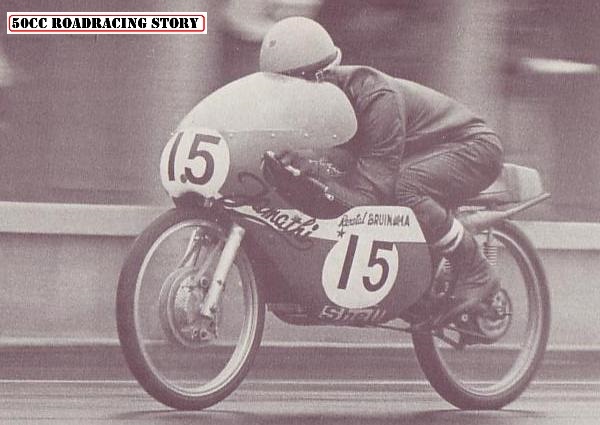 |
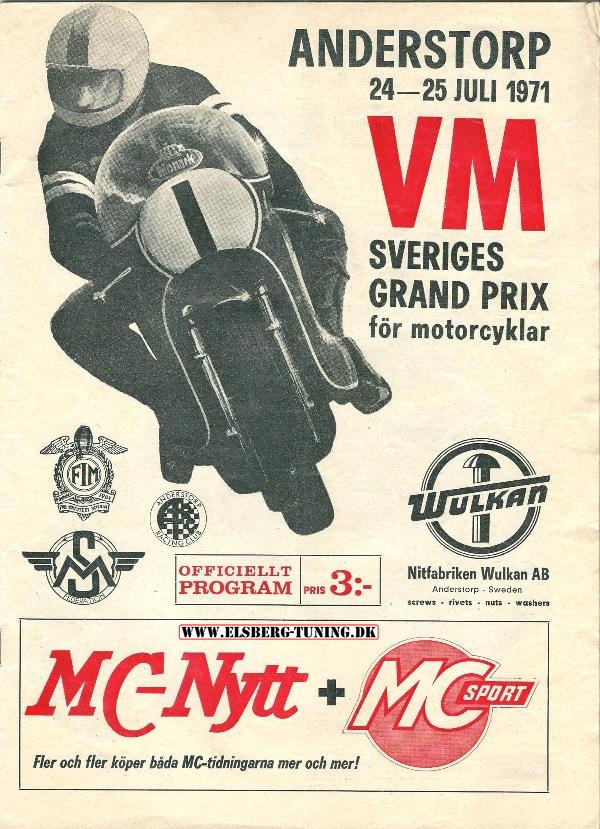 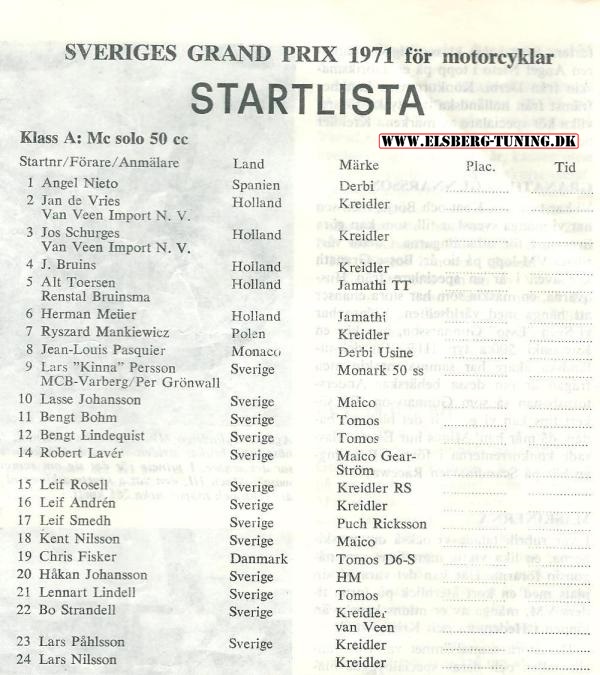 |